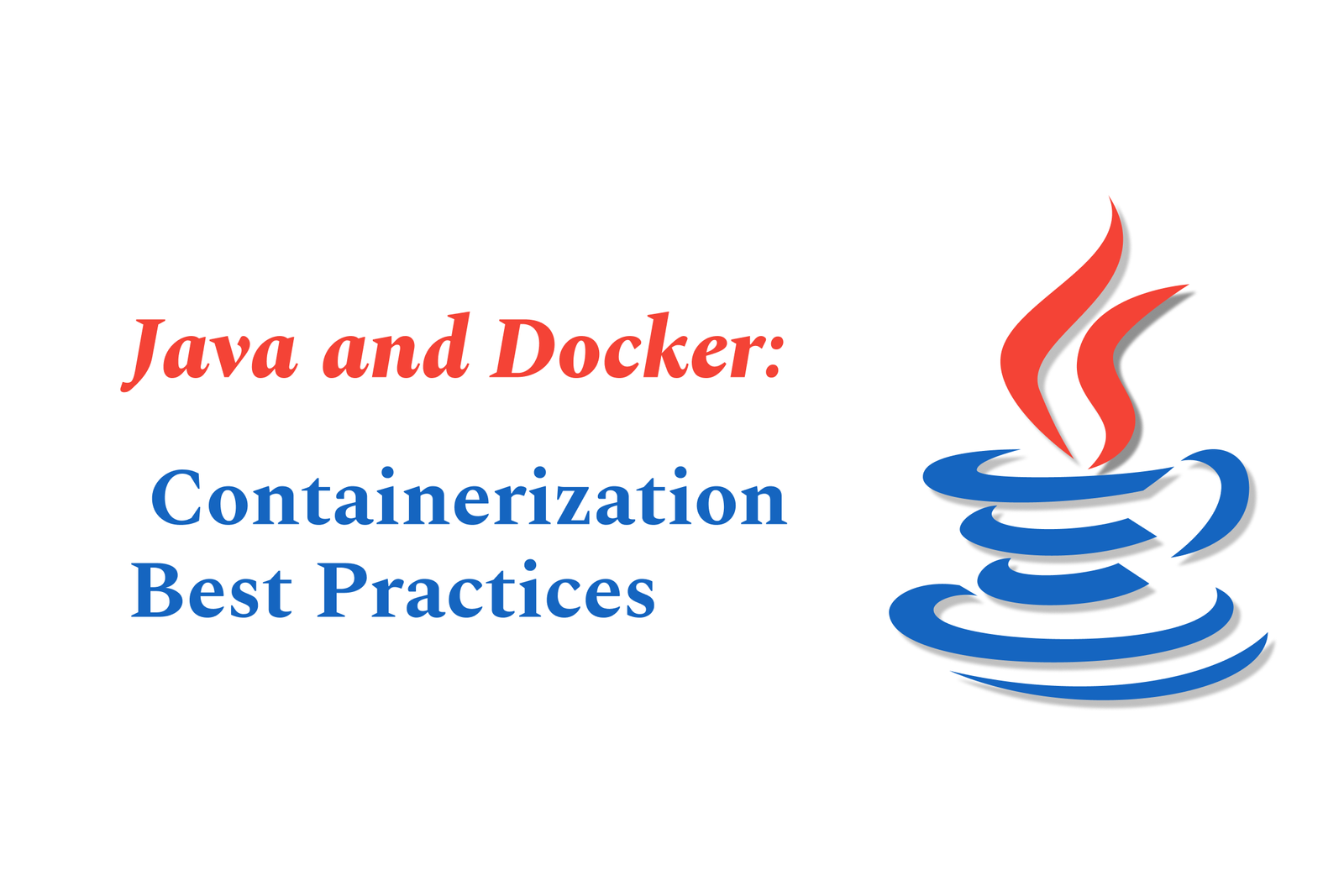Java and Docker: containerization best practices
Java and Docker containerization best practices focus on creating lightweight, secure, and efficient containers by using minimal base images, handling signals properly, optimizing builds with caching, ensuring secure Docker daemon access, and maintaining clean, single-application containers for scalable Java deployments.
Java and Docker: Containerization Best Practices
1 ) Single Application Per Container
Best practice is to run only a single application inside a Docker container.
Avoid mixing different services (e.g., PHP and MySQL) in one container to simplify debugging, proper Linux signal handling, and scalability.
2 ) Proper Signal Handling and PID 1 Management
Docker and Kubernetes send termination signals to PID 1 in containers.
Applications should correctly handle these signals for graceful shutdown.
Proper handling also avoids zombie processes and ensures clean container lifecycle management.
3 ) Optimize Docker Build Cache Usage
Utilize Docker layer caching to speed up builds by ordering commands in the Dockerfile smartly.
Place commands with rarely changing dependencies before copying application source code.
Example: Install dependencies before copying source code to cache dependency installation layers.
4 ) Minimize Container Attack Surface
Remove unnecessary tools and packages from containers to reduce vulnerabilities.
Prefer minimal or distroless base images.
Consider making container filesystems read only as an additional security measure.
5 ) Create Smallest Possible Images
Use minimal base images to reduce image size, improving download time and runtime efficiency.
Employ multi stage builds to omit build artifacts and dependencies from final images.
Smaller images also help in faster scaling and deployment.
6 ) Docker Daemon Security Best Practices
Avoid exposing Docker daemon socket over TCP to prevent unauthorized access.
Use TLS or SSH for secure communication if remote access to Docker daemon is necessary.
Enable rootless mode to run Docker daemon and containers without root privileges, enhancing security.
Keep Docker software up to date and apply OS level security frameworks like SELinux, Seccomp, or AppArmor.
Use user namespace remapping and harden the host OS to mitigate attacks.
7 ) Efficient Source Code Handling in Containers
For production, use `COPY` in Dockerfile to include source code, avoiding runtime dependencies like Git.
For development, mount source directories (`docker run v`) to enable live code updates.
Running `git clone` inside Dockerfile is less recommended due to cache invalidation and update challenges.
8 ) Managing Docker Resources and Cleaning
Regularly prune unused images and containers with `docker image prune` and `docker system prune`.
Limit the number of image layers to reduce size and complexity.
Use intermediate multi stage builds to keep images lean.
Avoid large base images like Ubuntu when possible; consider Alpine or scratch images.
9 ) Container Security in Development and Production
Apply container security measures throughout the development lifecycle.
Use secure images, limit permissions, and implement network and runtime security policies.
Continuously monitor container environments for vulnerabilities or misconfigurations.
In summary, combining Java applications with Docker containers requires adherence to containerization best practices focused on efficient image building, security hardening, proper lifecycle management, and resource optimization. Following these guidelines ensures scalable, secure, and maintainable Java deployments in containerized environments.
https://justacademy.in/news-detail/flutter-job-interviews:-what’s-changed
https://justacademy.in/news-detail/java-and-ai:-how-the-language-is-evolving
https://justacademy.in/news-detail/react-native?s-latest-animation-libraries-will-blow-your-mind
https://justacademy.in/news-detail/apple?s-new-app-privacy-report:-developer-guide
https://justacademy.in/news-detail/how-react-native-is-leading-the-way-in-accessibility-features
Related Posts
In 2025, top Angular libraries offer modern, feature-rich components and tools for building dynamic web apps. From powerful data grids to low-code platforms like UI Bakery, these libraries enhance development speed, UI design, and scalability, making them essential for Angular developers.
Migrating from AngularJS to Angular 17 involves gradually upgrading your app by running both frameworks together using tools like ngUpgrade, rewriting components in TypeScript, and adopting Angular’s modern architecture to enhance performance, maintainability, and long-term support.
Angular state management tools help organize and handle app data efficiently, improving scalability and maintainability. Popular options include NgRx for robust, RxJS-based patterns, and newer Signal Store solutions that offer simpler, reactive approaches integrated tightly with Angular’s latest features.
RxJS in Angular empowers developers to manage asynchronous data streams with powerful operators like `forkJoin`, `combineLatest`, and `zip`. Mastering these key operators in 2025 is essential for building efficient, reactive applications that handle complex event sequences seamlessly.
Angular performance optimization in 2025 focuses on improving app speed and responsiveness by using techniques like OnPush change detection, lazy loading, efficient data caching, and AOT compilation. These practices reduce load times, enhance user experience, and ensure scalable, fast Angular applications.
In 2025, Angular remains preferred for large-scale, enterprise apps with its robust, all-in-one framework, while Vue attracts developers seeking simplicity and fast development for smaller projects. Both frameworks excel, with choice driven by project needs and team expertise.
Angular Signals are a new reactive primitive in Angular 16 that enable fine-grained, efficient change detection by automatically tracking dependencies and updating only affected parts of the UI. They simplify state management and boost app performance, revolutionizing Angular's reactivity model.
Angular interview questions to prepare in 2025 focus on core concepts like components, directives, data binding, routing, and dependency injection, along with TypeScript mastery and latest Angular features to ensure strong practical knowledge for building scalable, efficient web applications.
AngularJS reached its official end of support in January 2022, meaning no further updates or security patches. To ensure app security and performance, developers should consider migrating to modern Angular versions or seek third-party long-term support options if immediate migration isn’t possible.
The Angular Roadmap 2025 highlights upcoming features focused on improving developer experience and performance, including zoneless Angular, Signals integration, enhanced Forms, async data handling, improved HMR, and expanded Angular Material/CDK enhancements, driving modern, efficient web app development.










